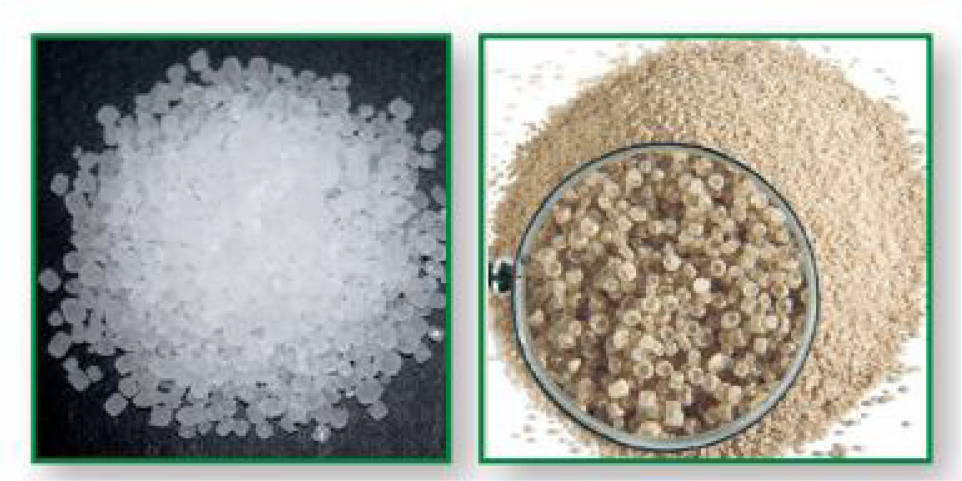⇦ Back to Fertilizer Lime Amendment Technology and Use Home
¶ Introduction
Ammonium sulfate [(NH4)2 SO4] was one of the first and most widely used nitrogen (N) fertilizers for crop production. It is now less commonly used, but its high solubility provides versatility for a number of agricultural applications.
¶ Production
Ammonium sulfate (abbreviated as AMS) has been produced for over 150 years. It was originally made from ammonia released during manufacturing of coal gas (used to illuminate cities) or from coal coke used to produce steel.
It is made from a reaction of sulfuric acid and heated ammonia. The size of the resulting crystals is determined by controlling the reaction conditions. When the desired size is achieved, the crystals are dried and screened to specific particle sizes. Some materials are coated with a conditioner to reduce dust and caking.
Most of the current demand for ammonium sulfate is met by production from by-products of various industries. For example, ammonium sulfate is a co-product in the manufacturing process of nylon.
Certain by-products that contain ammonia or spent sulfuric acid are commonly converted to ammonium sulfate for use in agriculture.
Although the color can range from white to beige, it is consistently sold as a highly soluble crystal that has excellent storage properties. The particle size can vary depending on its intended purpose
¶ Table 1. |
|
| Chemical formula | (NH4)2SO4 |
| Fertilizer analysis | 24% sulfur |
| 21% N | |
| Water solubility @ 68°F | 750 g/L |
| Solution pH | 5 to 6 |
¶ Agricultural Use
Ammonium sulfate is used primarily where there is a need for supplemental nitrogen and sulfur to meet the nutritional requirement of growing plants. Since it contains only 21% N, there are other fertilizer sources that are more concentrated and economical to handle and transport. AMS provides an excellent source of sulfur because of its high solubility.
A solution containing dissolved ammonium sulfate is often added to post-emergence herbicide sprays to improve their effectiveness at weed control. This practice of increasing herbicide efficacy with ammonium sulfate is particularly effective when the water supply contains significant concentrations of calcium, magnesium, or sodium. A high-purity grade of ammonium sulfate is often used for this purpose to avoid plugging spray nozzles.
¶ Figure 1. Ammonium Sulfate Forms

¶ Management Practices
After addition to soil, the ammonium sulfate rapidly dissociates into the ammonium and sulfate ions. If it remains on an alkaline soil surface, the ammonium may be susceptible to gaseous loss. In these situations, it should be incorporated into the soil as soon as feasible. Application before an irrigation event or a predicted rainfall is advisable.
In warm soils, microbes will rapidly begin to convert ammonium to nitrate in the process of nitrification
2 NH4+ + 3O2 2NO3- + 2H2O + 4H+
During this microbial reaction, acidity [H+] is released, which will ultimately decrease soil pH after repeated use.
Ammonium sulfate has an acidifying effect on soil due to the nitrification process…not from the presence of sulfate, which has a negligible effect on pH.
¶ Non-agricultural Use
Ammonium sulfate is commonly added to bread products as a dough conditioner. It is also a component in fire extinguisher powder and flame-proofing agents. It is used for many applications in the chemical, wood pulp, textile, and pharmaceutical industries.
¶ References
IPNI. Nutrient Source Specifics No. 12: Ammonium Sulfate. International Plant Nutrition Institute, Norcross Georgia. 1 pg.